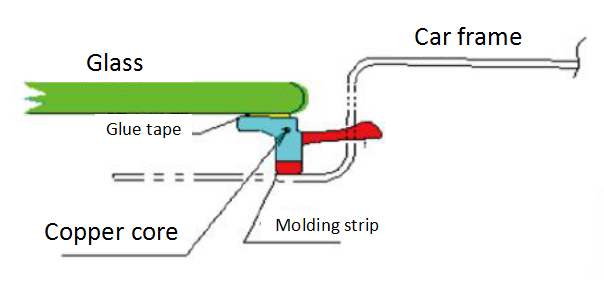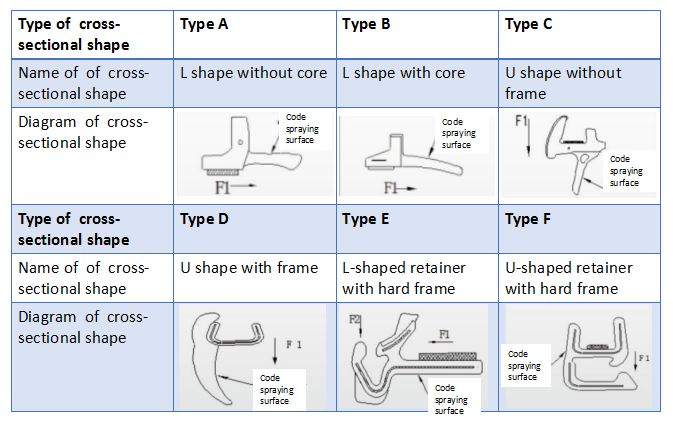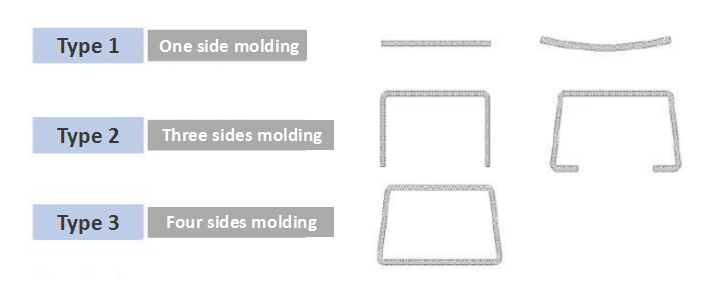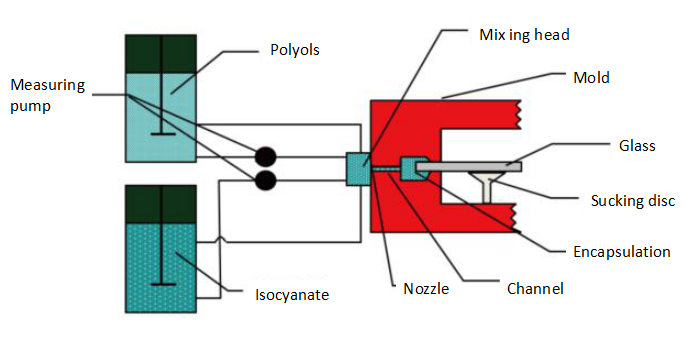Automotive accessories - Molding
2021-7-21
Molding glass is the functional extension of automobile safety glass. The molding on the edge of glass can not only prevent the overflow of adhesive between glass and sheet metal, it also meets the aesthetic demand of automobile manufacturers. Not only does it fuction to adhere the glass to the vehicle body it also acts to improve the sealing performance, reducing noise and prevents water penetration.
In order to facilitate a better understanding of the molding process, the following will introduce three categories of molding:
 1. Modified extrusion (molding strip)
1. Modified extrusion (molding strip)
Scope of application: It is mainly applied on front and rear windshield, especially on front windshield. The molding strip is the most common molding method on glass. It is simple in structure, can assist the integration of glass, molding and frame, which is very popular in the market.
Material: mainly PP, PVC, PVC+ABS, PVC+MPR, EPDM, TPE/TPV/TPO and other rubber and plastic materials.
The molding strip used by Fuyao Glass was developed by the Fuyao Accessories Department and has independent intellectual property rights. The molding strips are bonded to the glass on the production line by 3M adhesive or polyurethane adhesive. After bonding, the molding strips are required to be firmly bonded, flat, free of waves and bends.
Typical car body assembly effects are as follows:

Molding strips are classified according to cross-sectional shape: 6 categories.

Molding strips are classified by shape: 3 categories.

2.Extrusion
Scope of application: front and rear windshield, triangular window, side window and sunroof;
Material: one-component polyurethane;
In the Fuyao Factory, automatic technology is adopted for extrusion molding, and the manipulator is controlled by a computer program. One-component polyurethane (PU) is directly extruded along the peripheral track of glass and coated on the printed edge of glass after primer treatment is used to form the molded products.
3. Encapsulation
Mainly includes the following two types:
(1) PU reaction encapsulation:
Scope of application: sunroof, front and rear glass, triangular windows and side windows.
Material: two-component polyurethane.
Two-component PU raw materials are accurately measured, then delivered to a mixing head by a high-pressure metering pump for high-pressure mixing. The polyurethane is then injected into a mold with the glass. A chemical reaction takes place, polymerized and solidified on the surface of the mold cavity, resulting in a glass product with PU material coated on the edge of the glass is produced. The key benefit is it has excellent weather resistance and mechanical properties.

(2) Encapsulation of thermoplastic materials:
Scope of application: triangular window, side window, sunroof, middle and small rear glass.
Material: PVC, thermoplastic elastomer.
Thermoplastic granules are heated, melted and plasticized into the barrel of the injection molding machine, and the liquified chemical is injected into the mold with the surface treated glass at high pressure and high speed. The final process is cooled and shaped in the mold to coat the edge surface of the glass.
Glass molding shows a factory's production technical level, especially extrusion and encapsulation, which have higher requirements for automation and precision measurements. Fuyao Factory has met or exceeded the technical requirements of such products. Choosing Fuyao’s products ultimately means choosing a better quality glass!
